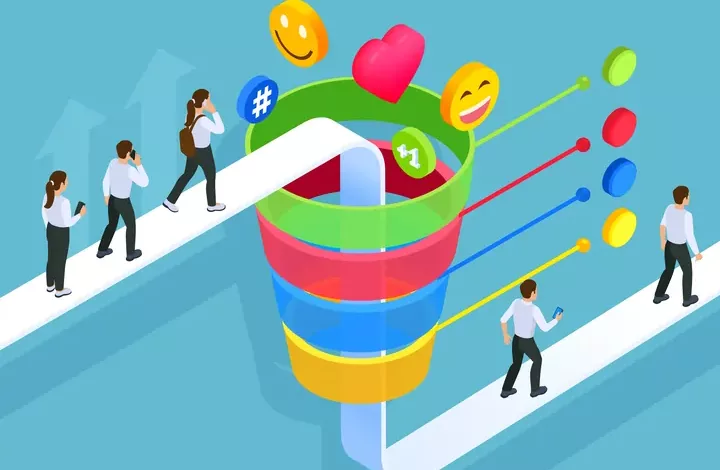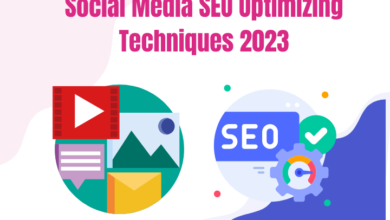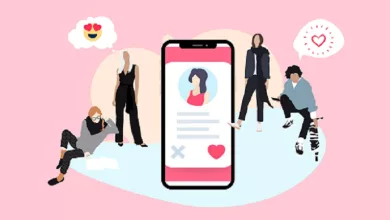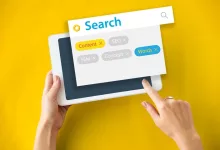Top of Funnel vs. Bottom: Strategies for Engaging Different Audiences

One of the critical components of digital marketing is content. For your strategy to have the most significant impact, you must be able to write content that converts and know exactly where to use it.
That’s why it’s crucial to understand lower funnel vs. upper funnel when it comes to strategies. Let’s take a look at the top and bottom funnel strategies.
Top Of The Funnel Strategies
Top-of-the-funnel (TOFU) strategies are advertising and sales techniques designed to attract a large audience and introduce them to your company’s name or goods.
The development of leads and raising awareness both require these tactics. Here are some effective top-of-the-funnel strategies:
Content Marketing
- Blog regularly about subjects pertinent to your industry and the interests of your target audience.
- Whitepapers and e-books: Produce in-depth resources that address particular problems or offer helpful information in exchange for contact details.
- Infographics: Visual content has a higher shareability and more significant audience engagement potential.
- Create entertaining or educational videos, then post them on websites like YouTube or social media.
Social Media Marketing
- Make active profiles on the leading social media sites and keep them updated.
- Run targeted ad campaigns, interact with your audience, and share informative content.
- Utilize social listening tools to monitor conversations and spot chances to interact with potential clients.
Search Engine Optimization (SEO)
- To increase organic visibility, optimize your website and content for search engines.
- For organic traffic, conduct keyword research and target relevant terms.
- Produce content that is of the highest quality, is educational, and is user-friendly.
Paid Advertising
- Google Ads
- Run pay-per-click (PPC) campaigns to appear in search results.
- Social Media Ads – Utilize platforms like Facebook, Instagram, and Twitter for targeted advertising.
- Display Ads – Use banner ads on relevant websites to reach a wider audience.
Email Marketing
- By providing helpful content or incentives, you can grow your email list.
- Send periodic newsletters and promotional emails to cultivate leads and maintain brand awareness.
Influencer Marketing
- Join forces with thought leaders in your sector to connect with their attentive audiences.
- Make sure influencers match your brand’s values and target market.
Referral Programs
- Encourage pleased clients to recommend your goods or services to friends and family.
- Encourage referrals by offering discounts or incentives.
Networking and Partnerships
- Work together with other companies or industry influencers to reach their audience.
- To create connections and generate leads, go to industry gatherings and conferences.
Interactive Content
- Make interactive tools like games, polls, or surveys to keep users’ attention while gathering valuable data.
- Lead generation can be aided by interactive content, which is very shareable.
Bottom Of The Funnel Strategies
Marketing and sales strategies, known as bottom-of-the-funnel (BOFU) strategies, are intended to turn leads into paying customers.
At this point, your target market is well-informed about your company and its offerings and is actively considering purchasing. Here are some effective BOFU strategies:
Remarketing and Retargeting
- Retarget visitors to your website or readers of your content using online advertising tools like Google Ads and Facebook Ads.
- Send them personalized ads and offers to pique their interest and promote conversions.
Email Marketing Automation
- Implement automated email campaigns that provide leads with customized content, product recommendations, and exclusive deals.
- Organize your email list into segments based on user preferences and behavior.
Product Demonstrations and Trials
- To give potential customers a hands-on experience with your product, provide free trials or product demonstrations.
- To assist users in understanding the value, offer clear instructions and support throughout the trial period.
Customer Reviews and Testimonials
- Display gratifying customer feedback and testimonials in your marketing materials and website.
- Prospective buyers may feel more confident after hearing about real-world experiences from happy clients.
Case Studies
- Make thorough case studies that demonstrate how your product or service has helped previous clients with specific issues.
- Use statistics and case studies to demonstrate the advantages.
Personalized Sales Outreach
- Give your sales team knowledge about leads’ preferences, actions, and brand interactions.
- Create tailored outreach offers and messages to cater to individual needs.
Special Offers and Discounts
- To entice immediate purchases, offer special discounts, promotions, or bundles.
- Limited-time deals can make people feel pressed for time.
Abandoned Cart Recovery
- Set up automated systems to remind users who have left their shopping carts empty.
- Give them rewards or discounts to persuade them to finish the transaction.
Customer Support and Live Chat
- Make it simple for prospective customers to contact your customer support staff.
- Use live chat or chatbots to respond to queries and concerns in real time.
Read Also: In-App Subscriptions vs. One-Time Purchases: Which Is Right for Your App?
Upselling and Cross-Selling
- Depending on the customers’ prior purchases, suggest upgrades or complementary products.
- Emphasize how these extra products can make their experience better.
Clear and Simple Checkout Process
- Improve the checkout process on your website to lower friction and make it simple for customers to finish their purchases.
- Provide a variety of payment methods for convenience.
Post-Purchase Follow-Up
- After the sale, communicate with customers by sending thank-you emails, requesting reviews, and offering ongoing assistance.
- Long-term relationships and repeat business may result from this.
Read Also: 6 Effective Instagram Marketing Strategies
A/B Testing and Optimization
- To increase conversion rates, regularly test and refine landing pages, forms, and checkout procedures.
- Utilize data to inform decisions based on user feedback and behavior.
Bottom-of-the-funnel strategies are essential for maximizing revenue and ensuring a positive customer experience.
Both top and bottom-of-the-funnel strategies must work cohesively as part of the marketing vision and strategy of the brand.





